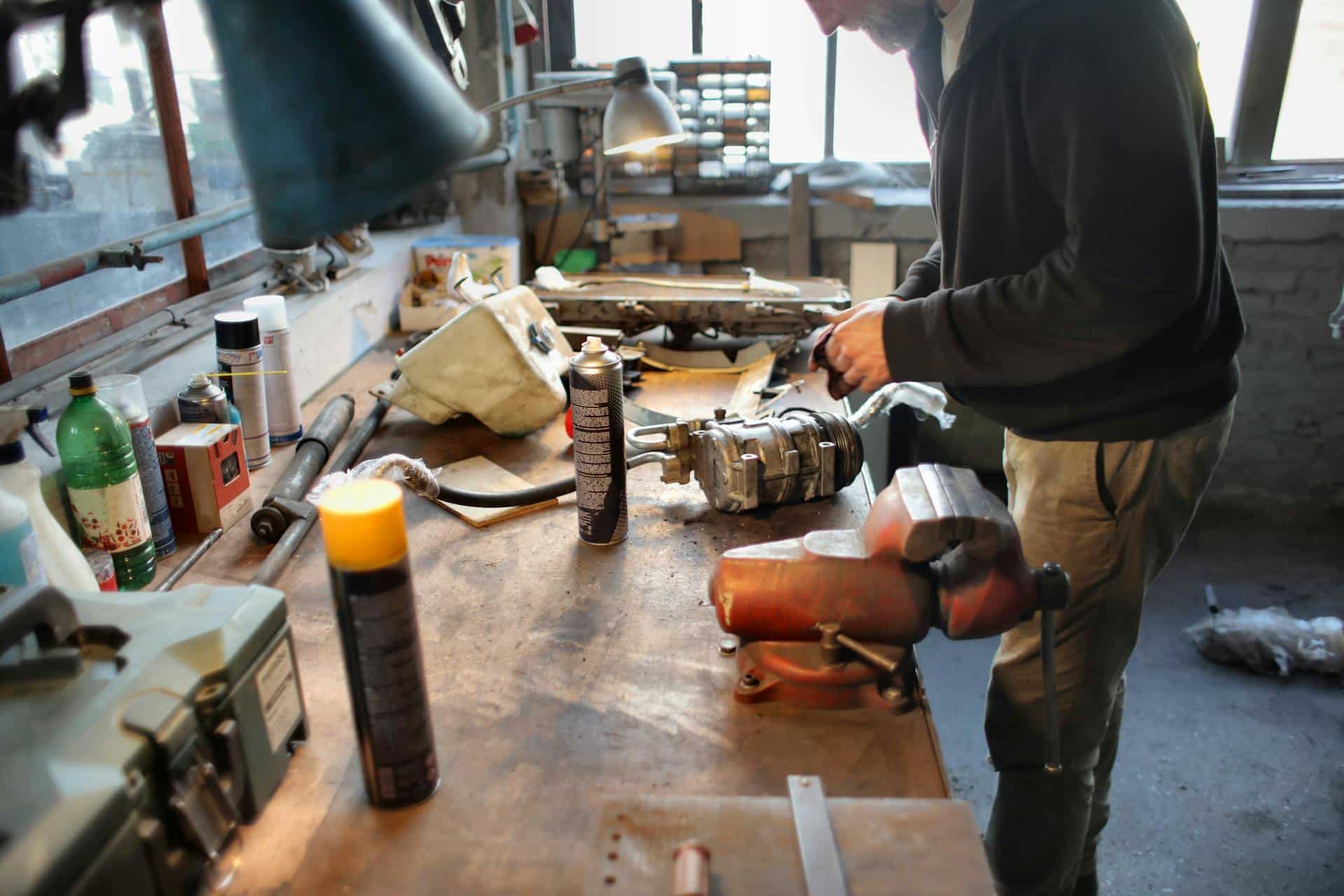Hydraulic Cylinders
The functional element of hydraulic cylinders is in almost all industrial machines and is responsible for performing particularly demanding linear mechanical operations. These devices are powered by fluids and their purpose is to transform the power into a mechanical force that cannot be avoided in machines. Appreciating hydraulic cylinder workflow and use is one of the critical things, as they are the main pipelines for improvements of the performance and maintaining ecologically safe movement.
Functionality of Hydraulic Cylinders
The operating principle of hydraulic cylinders is derived from Pascal’s law where when pressure is put on a confined fluid, it is transmitted equally in all directions. At the same time, the fluid gets pumped into the cylinder, the latter pushes the piston out under pressure thus creating a linear motion.
The movement can be employed to get goods such as lifting, pushing, pulling, and so on. Hydraulic cylinders with adjustment are multifunctional and preferred in various fields of production at the enterprise.
Parts of a Hydraulic Actuator
A typical hydraulic cylinder assembly involves several essential elements such as a cylinder tube, a piston, a piston rod, seals, and hydraulic fluid. The barrel is a cylinder where a piston is located along with the fluid, which is separated into parts by a piston just like the pressure differentials are created via the difference in pressure between both sides. Seals stop fluid leakages, as a result of the system performance being imparted by the piston rod, which transmits the external force with the piston.
Types of Hydraulic Cylinders
The hydraulic cylinders are of different classes, providing customized performance for different conditions. They include piston types which may include single-acting cylinders, double-acting cylinders, telescopic cylinders, and differential cylinders.
Cylinders, single acting that are actuated towards one direction, double acting cylinders pistons pull and push. The telescopic cylinders are fully extended with a series of nested sleeves attached to a gush of water and the differential cylinders gain increasing pressure due to differences in piston diameters.
Applications of Hydraulic Cylinders
The universal nature of the hydraulic cylinders allows them to serve as a powerful core part in numerous fields. Their application span is quite wide, starting from construction and forestry, going through manufacturing and aerospace, where they are often found in excavators, bulldozers, presses, and airplane landing gear assemblies. The power of their force that is available to give the needed impact and also with close circle makes them crucial in heavy-duty tasks.
Advantages of Hydraulic Cylinders
Hydraulic cylinders provide numerous advantages besides the conventional mechanical substitutes. They generate the required force with minimal volume sizes which then makes it easy to transfer power in occupied areas. Indeed, a hydraulic system also provides the ability the control speed and force toward the safety and efficient work in the unit of several applications. Their robustness and long-term reliability function as a competitive point in tasking environments that have often damaged ones.
Repairing and Keeping the Hydraulic Cylinders in Good Condition
Correct maintenance is an important part of hydraulic cylinder existence. You need to do it to have them working well for a long time. Performing exams of seals, reservoirs, and piston rods will incite a behavior of detecting things beforehand. Moreover, keeping the hydraulic system clean from contamination also solves the same problems as the polluted hydraulic system which affects the seals and efficiency. Following manufacturer instructions for emphasizing the viscosity and the intervals in which the fluids should be replaced is important to maintain the efficiency to a very high level.
Hydraulic Cylinder Selection Considerations
- Choosing an appropriate hydraulic cylinder which may involve an assessment of load necessities, operational conditions, and available space is a mandate task. Considering the amount of force desired, the stroke length needed, and the preferred speed of the actuator reduces the options potential. Besides that, the determining factors include temperature, humidity, and resistance to corrosive effects to ensure the selected cylinder lasts long and performs reliably in the specific environment.
- Over the years breakthroughs for example, in Hydraulic Cylinder Technology have transpired particularly in the global automobile industry where enhanced efficiency and fuel savings have been raised to a super-quality level.
- Hydraulic cylinders are still among the ever-moving forward fields for increased efficiency and productivity. Increased strength-to-weight optimization ratio thanks to the addition of early fabrics and new fabrication methodology results in cylinders with extended life span and lower wear rate. Thanks to Sensor’s findings and implementation in conjunction with smart controls, it is now possible to track Contemporary operations and efficiency and assess and refurbish hot spots in real time.
To put it simply, a Hydraulic Cylinder comprises some parts
Know More About News: NRU Times
- A typical hydraulic cylinder comprises several key components: A typical hydraulic cylinder comprises several key components
Barrel: This is the cylindrical housing that which is constructed to contain all the internal components, as well as, the loading is applied.
Piston: The piston which is usually a disc-shaped or rodding-shaped member, is a translator for the hydraulic pressure into linear displacement.
Piston rod: This rod is the medium that carries the energy of the piston movement into the external machine by forcing the piston.
Head and cap: These structures are placed at the end of the barrel and serve as closing seals, also having fuel passage ports.
Seals: Sealing is the job of each seal that allows oil flow between the parts in motion and stationary parts.
The Explaining of the Principle Function of a Hydraulic Cylinder
- The hydraulic cylinder is based on Pascal’s thinking on pressure which states that when pressure is applied to a confined hydraulic fluid it results in the fluid being transmitted via pressure and equally in all directions. Here’s a breakdown of the working principle: Here’s a breakdown of the working principle:
- Hydraulic oil is pumped into the chamber or the chambers of the cylinder. There are two entry ports for this.
- The hydraulic force is caused by the piston area within which the fluid pressure operates.
- This means, of course, that the pushing force prevails over the force of the. As a result, the rod pushes the piston back or forth inside of the cylinder.
- Moving the piston rod from the hydraulic energy feeder to the intended linear motion is done by this way of energy translation.
Types of Hydraulic Cylinders
- Hydraulic cylinders are available in several types, thus to match the needs and applications. Here are two main categories: Here are two main categories:
- Single-acting cylinders: With such cylinders, the recovery depends on external forces, for instance, the configuration of spring pressure, and the retraction is achieved through the body that is in contact with the rod and produces the necessary hydraulic pressure.
Double-acting cylinders: These cylinders are based on hydraulic pressure which provides even more direction around the movement of the rod as a result of the two-way control.
Applications of Hydraulic Cylinders
With the capability to produce powerful and coherent linear movements, hydraulic cylinders are widely used in different industries where such particular movements are needed. Some prominent examples include:
Construction equipment: They energize the front end of excavators, bulldozers, and other heavy machinery for lifting, digging, and pushing functions. The function of hydraulic pistons, cylinders, and motors in mechanical systems is to:
Manufacturing machinery: Essentially these are providing individual operations for presses, material handling equipment, and robotics.
Transportation: They can be utilized in the airlines’ landing gear, heavy-duty truck suspensions, and agricultural machines.
Energy sector: They take up quite a role in operating valves, turbines, and other machinery utilized in plants that generate power and ensure its distribution.
Advantages of Hydraulic Cylinders
Hydraulic cylinders offer several advantages compared to other linear actuation methods, including Hydraulic cylinders offer several advantages compared to other linear actuation methods, including:
High force output: They can produce large forces which can make them well suited for demanding street works.
Precise control: Hydraulic systems can run through the whole press process by setting the flow and pressure of operating fluid, and thus the driving and movement of each part is precisely controlled.
Versatility: Each of them has a variety of sizes and layouts that are designed purposefully for different types of applications.
Durability: Hydraulic cylinders are inherently strong and can accommodate many conditions that are considered to be harmful to their operation.
Environmental Considerations
Because of the many advantages of hydraulic cylinders, still what kind of environmental remedies should be applied for hydraulic fluids is a question of utmost importance. Well-thought-out selection of eco-friendly fluids and environmentally safe res destruction alleviates the environmental impact. Furthermore, evolutionary issues of hydraulic systems are focused on cutting oil leakage and energy efficiency, which is an essential component of sustainability programs.
- The hydrostatic cylinder has a long history in hydraulic systems operations, and its development will likely continue for years to come
The momentum of the hydraulic cylinder future is driven by the will of efficiency, sustainability, and integration of digital technologies. Additional research on new substances and innovative manufacturing techniques will lead to material improvements aimed at accomplishing this goal as well. IoT device integration and digital valve analytics help make the systems smart and efficient with easy-to-apply automation and optimization era continuing.
Conclusion
Hydraulic cylinders are irreplaceable in all sectors as they offer overwhelming power and are the most trustworthy devices to transfer forces around the world for many applications. Recognizing their device mechanism, anatomy, and selection principles is essential points in the aim to better the effectiveness and ensure equipment functioning. Implementing new technology and adapting to sustainable practices will determine how the hydraulic cylinder function is used in the future, making technology progress and increasing innovation across industries.
FAQs
A hydraulic cylinder is a device that uses hydraulic fluid to amplify force and achieve motion.
- The hydraulic cylinder is a mechanical actuator that turns the hydraulic energy into linear motion and force, mostly used in industrial and computerized equipment for varying purposes of lifting, pushing, or pulling loads.
Hydraulic cylinders are machines that operate through a simple but very effective principle: transforming energy into motion.
- Hydraulic cylinders are a type of press of the principle wherein exerted pressure on a confined fluid is transmitted in all directions equally transforming into the energy of linear motion which is in turn converted into the motion of a piston within the cylinder.
What do a hydraulic cylinder’s main components consist of?
- The primary constitutes of a hydraulic cylinder comprises a cylinder barrel, piston, piston rod, seals, and hydraulic fluid that all work together to make a cylinder function without any breakdowns or stalling.
Which are the hydraulic cylinders’ types?
- Typical types of hydraulic cylinders include single-acting cylinders, double-acting cylinders, telescopic cylinders, and differential cylinders, where each type of cylinder is particular for its specific approach.
I the hydraulic cylinder maintainer, the questions are “how this hydraulic cylinder is maintained?”
- Since maintenance is a form of inspection that involves regular checks of hydraulic seals, hydraulic fluid levels, and heavy-duty valves, it is important to maintain a clean hydraulic system to prevent contamination and achieve maximum performance and durability.


